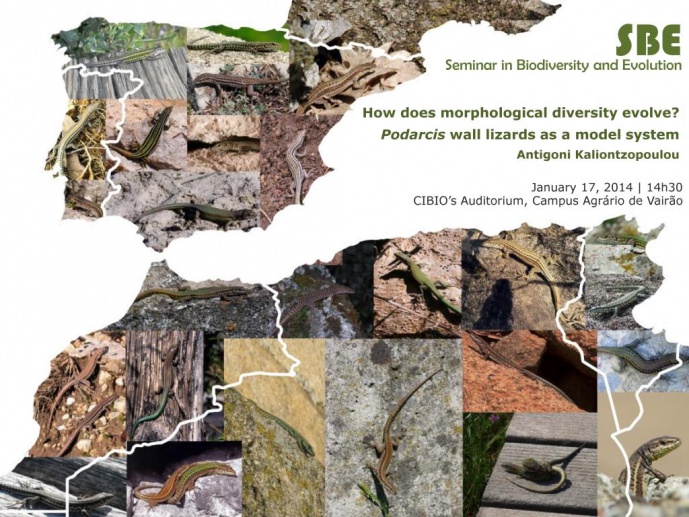HOW DOES MORPHOLOGICAL DIVERSITY EVOLVE? PODARCIS WALL LIZARDS AS A MODEL SYSTEM


Understanding how phenotypic diversity emerges and is maintained is one of the central objectives of evolutionary biology. This question is particularly relevant in groups with high levels of morphological variability, where different sources of variation are combined and their effects blended together to generate the large-scale patterns observed in nature. Here I provide an overview of the work carried out in the group of Integrative Biogeography, Ecology and Evolution in CIBIO, using Podarcis wall lizards as a model system to disentangle the contribution of developmental, ecological, social and evolutionary processes in shaping morphological diversity in this Mediterranean lizard group.
Antigoni Kaliontzopoulou received her PhD in Zoology from the University of Barcelona in 2010. She is currently a post-doctoral researcher in the Integrative Biogeography, Ecology and Evolution group in CIBIO. Her research focuses on understanding the ecological and evolutionary mechanisms that underlie the generation of phenotypic diversity.
Image credits: Antigoni Kaliontzopoulou